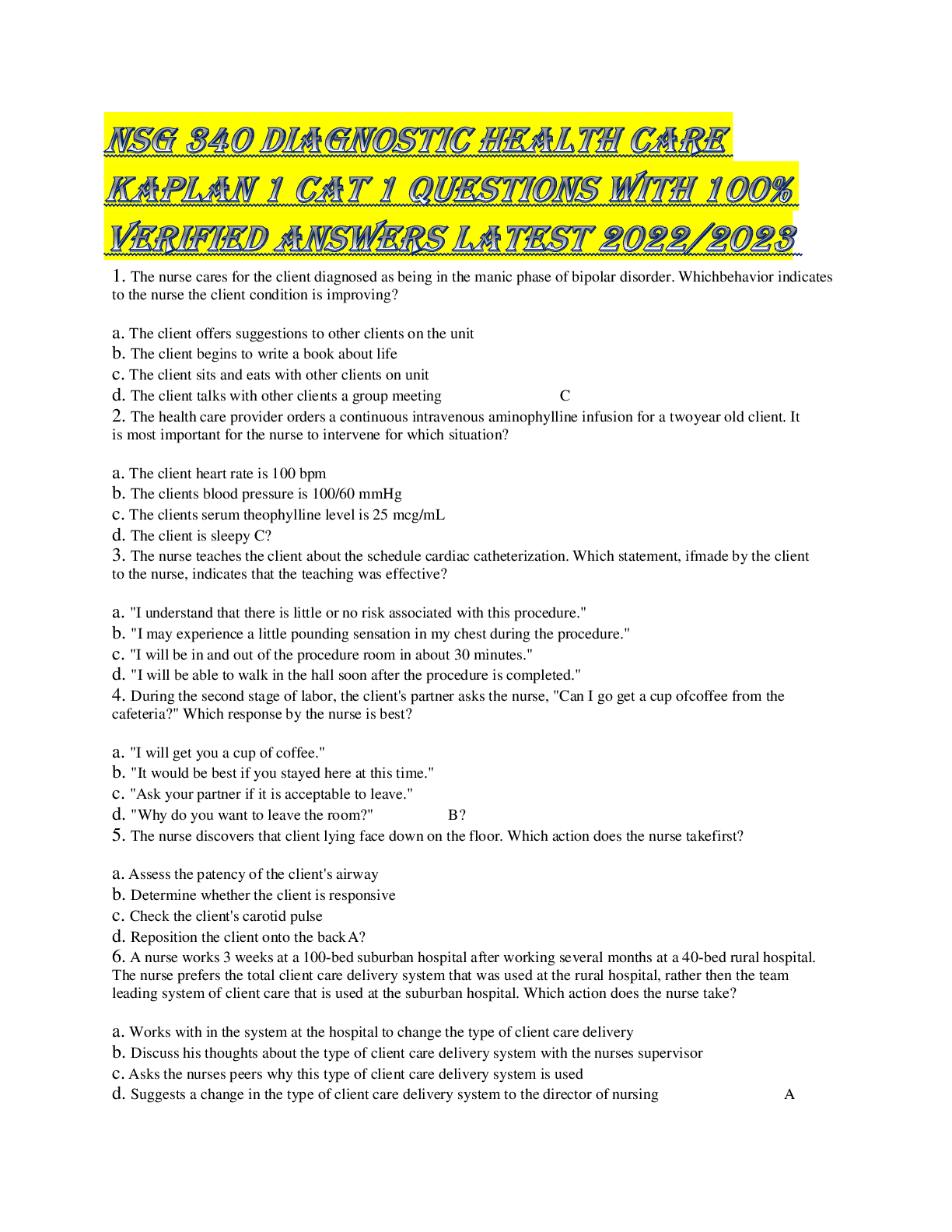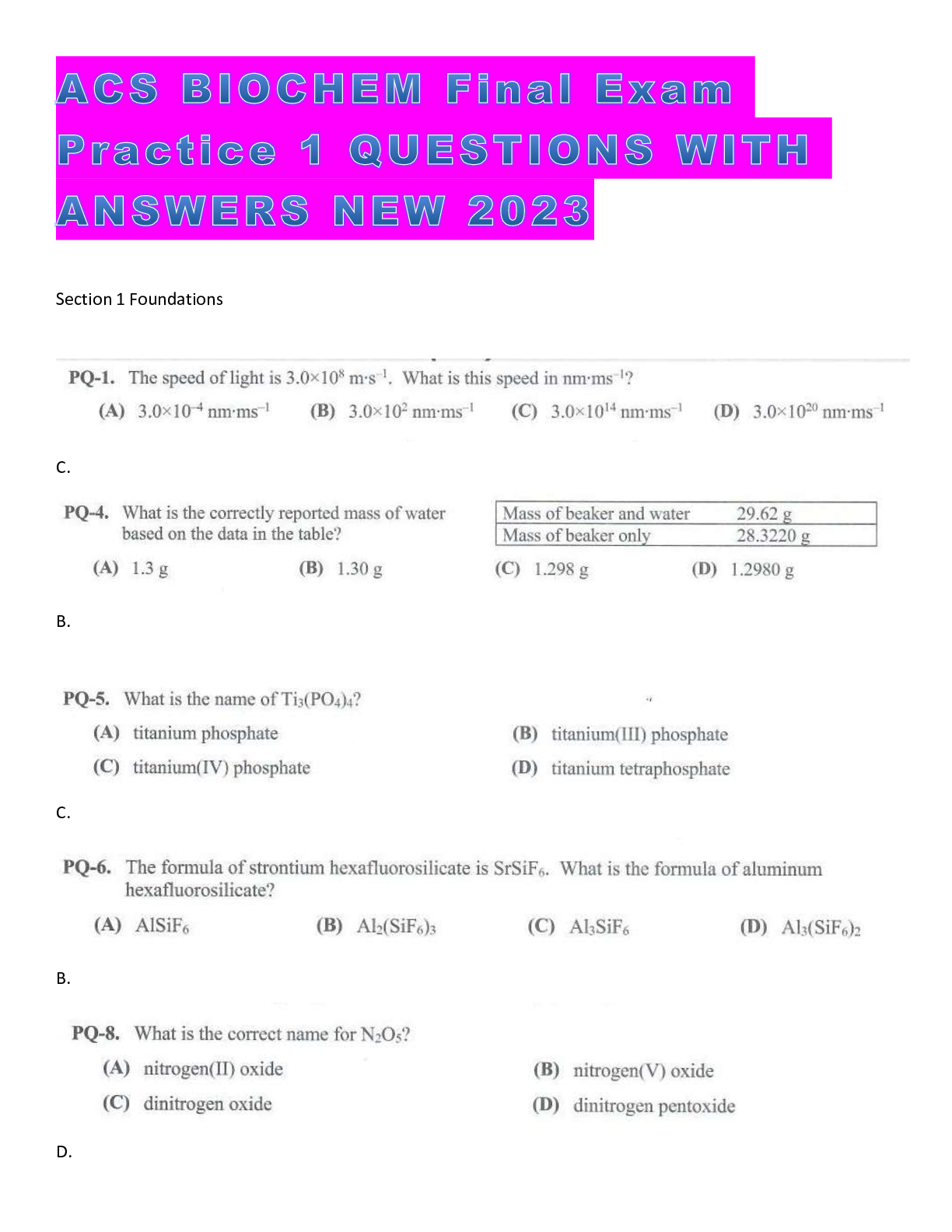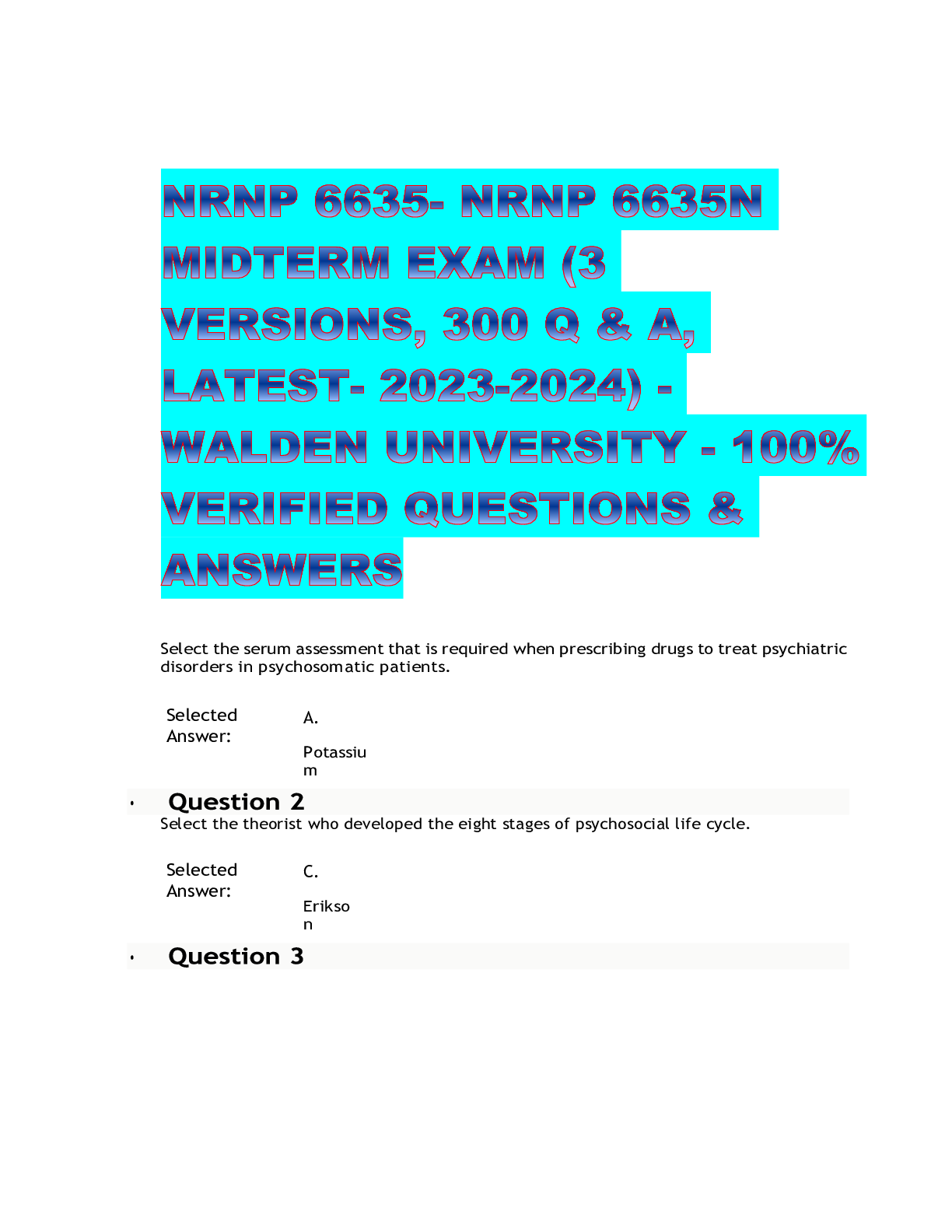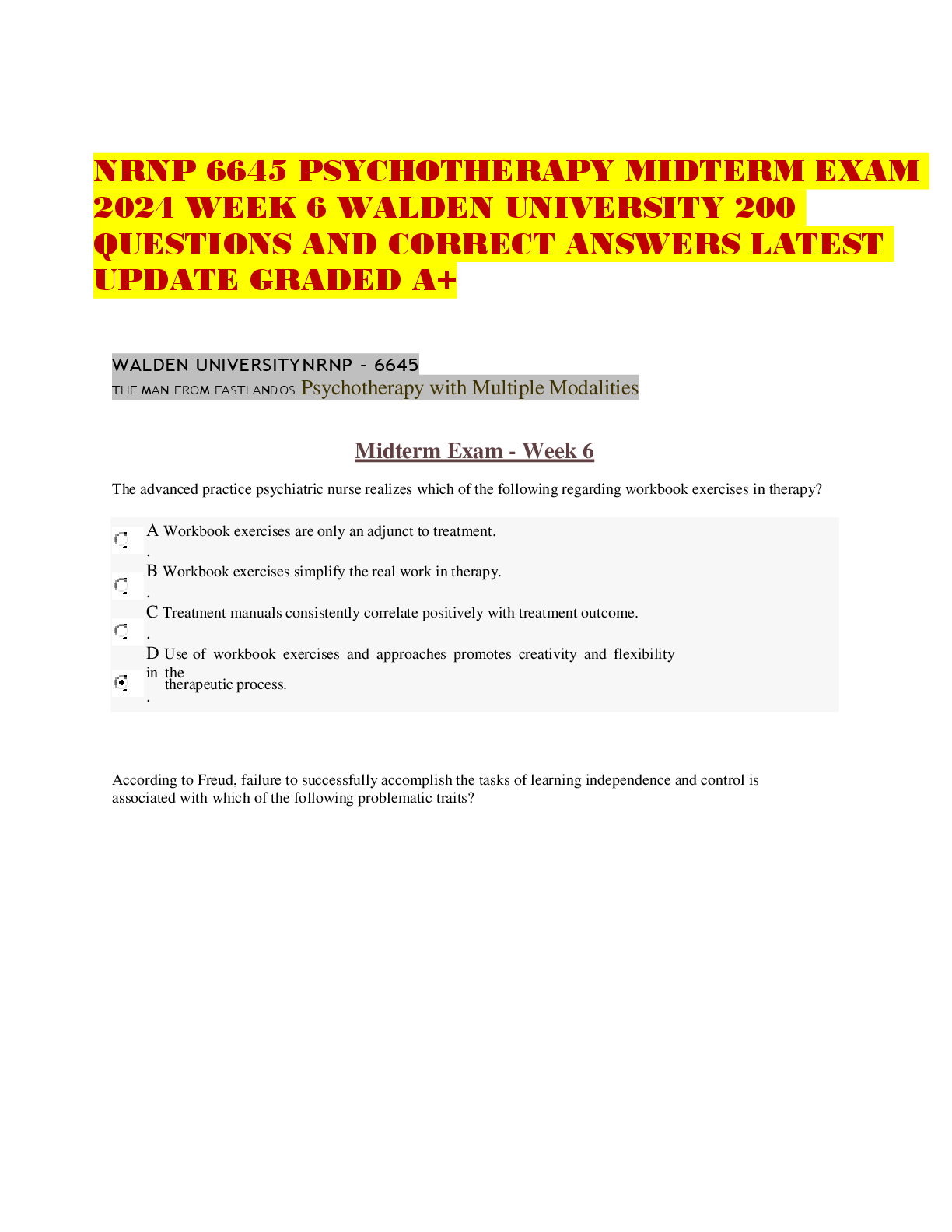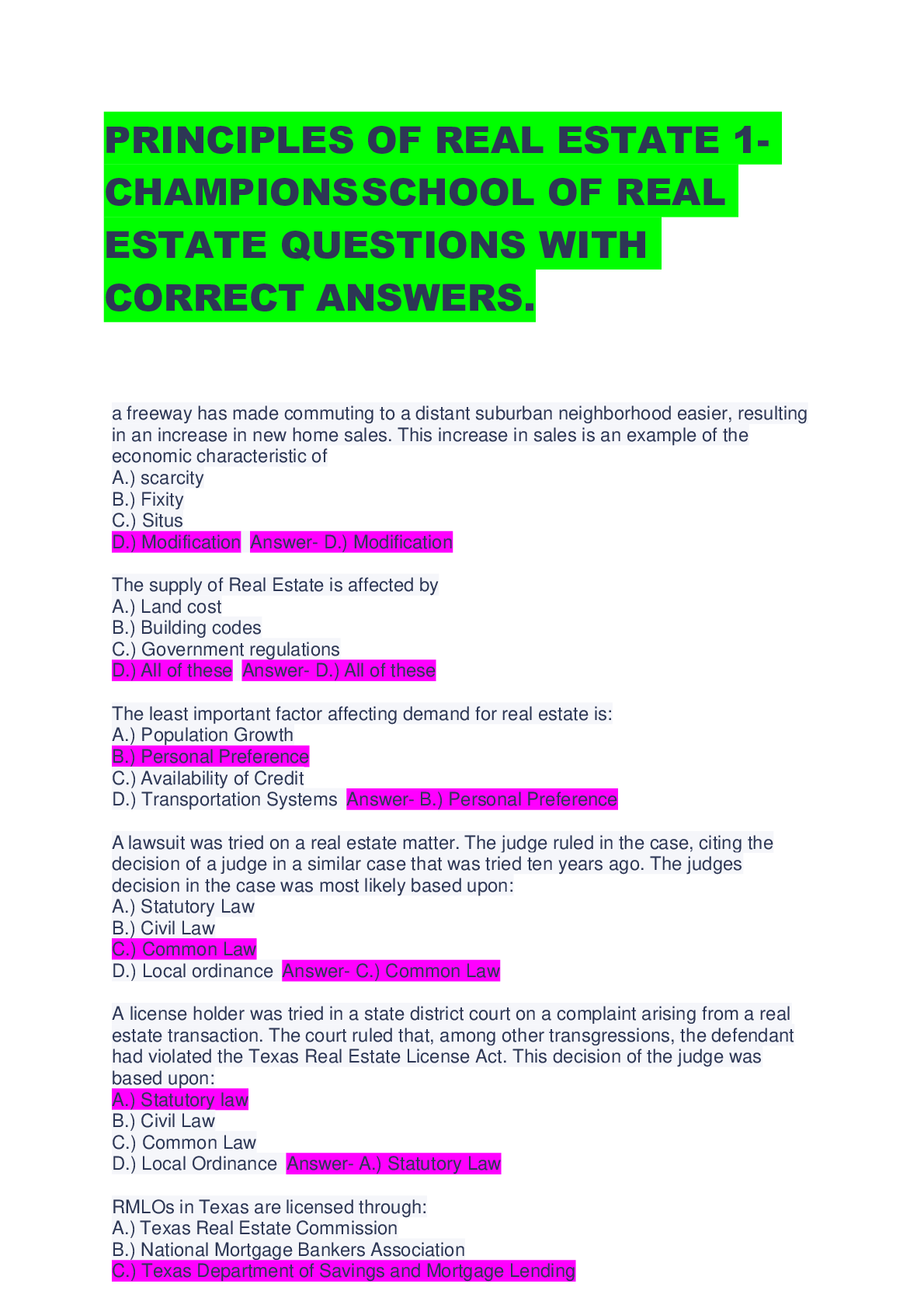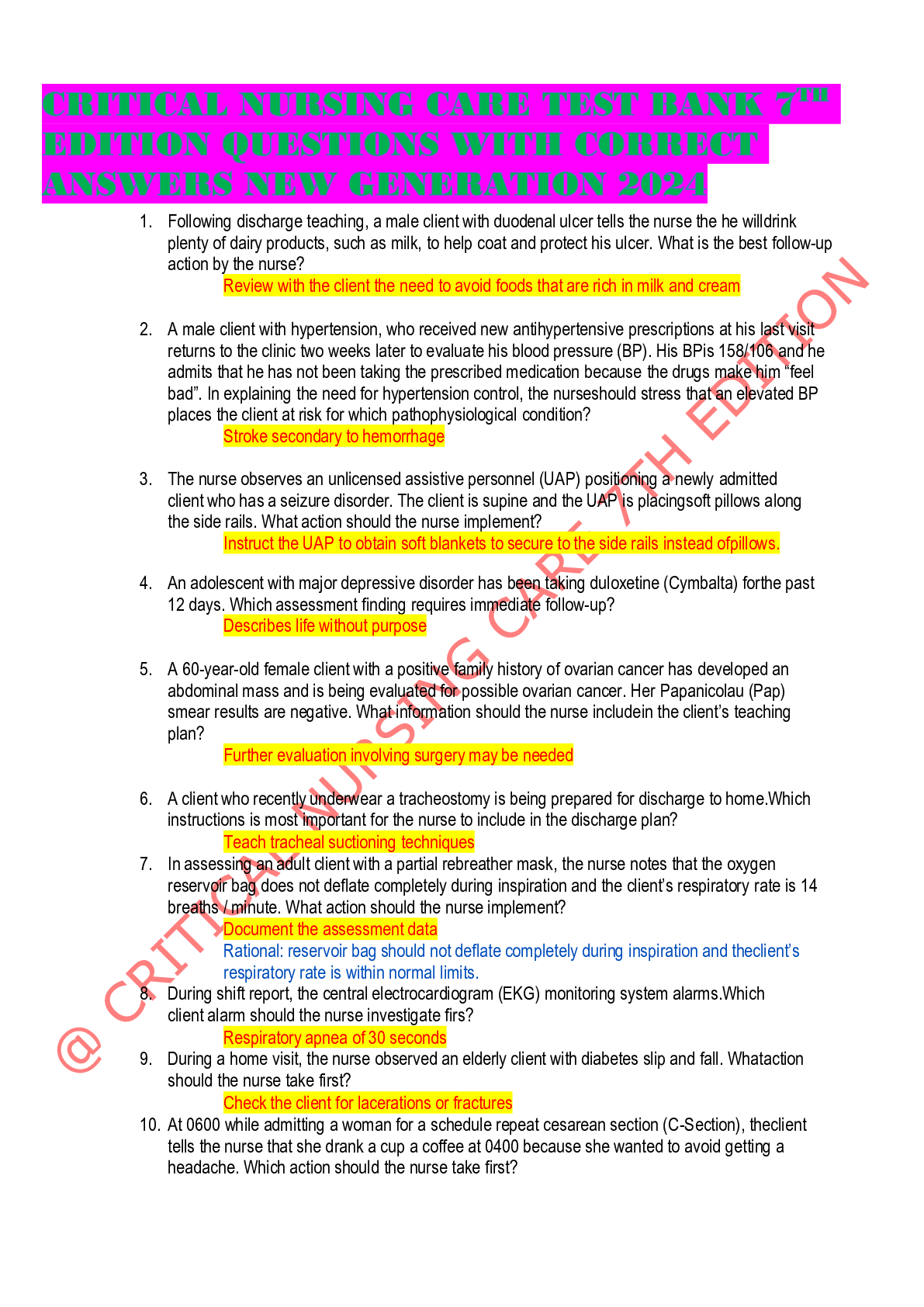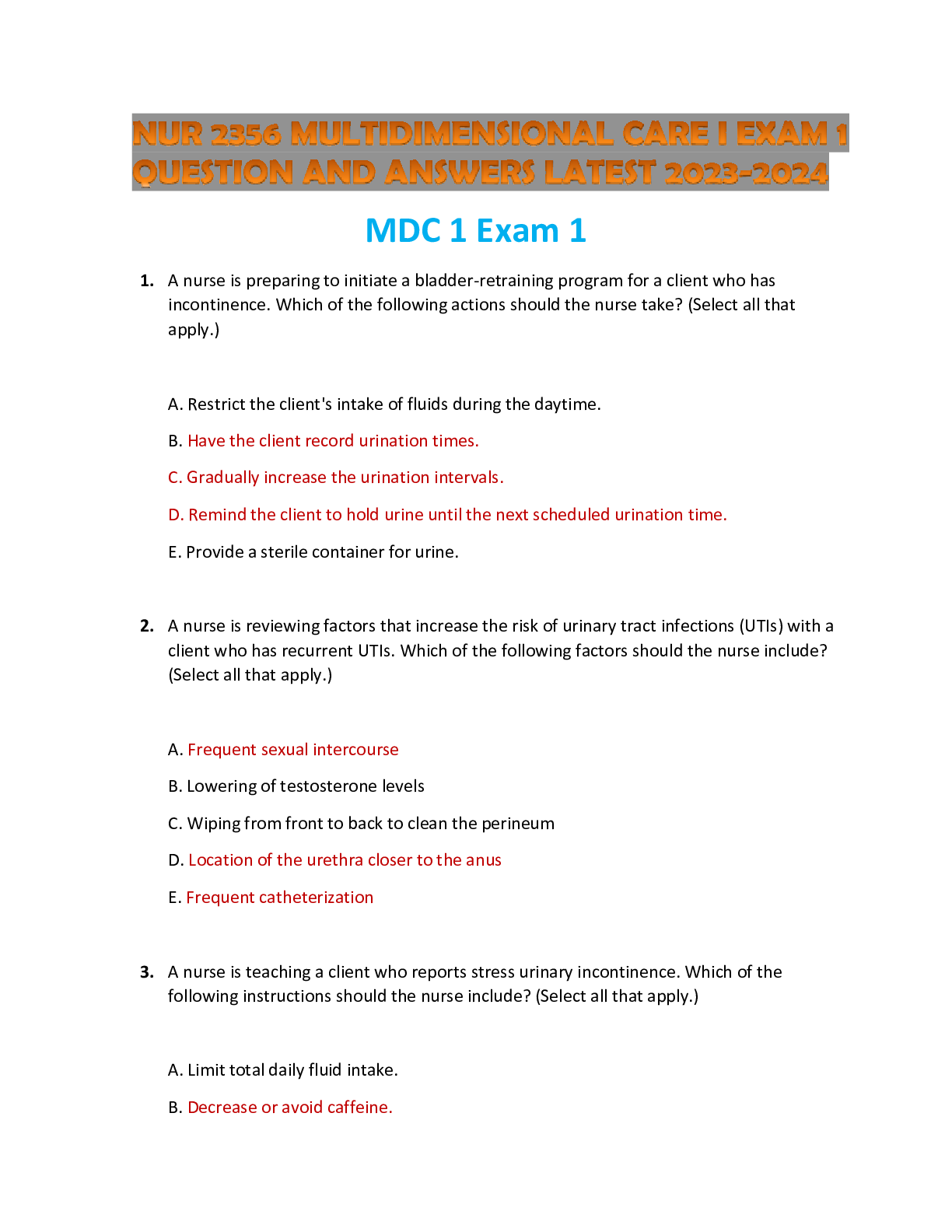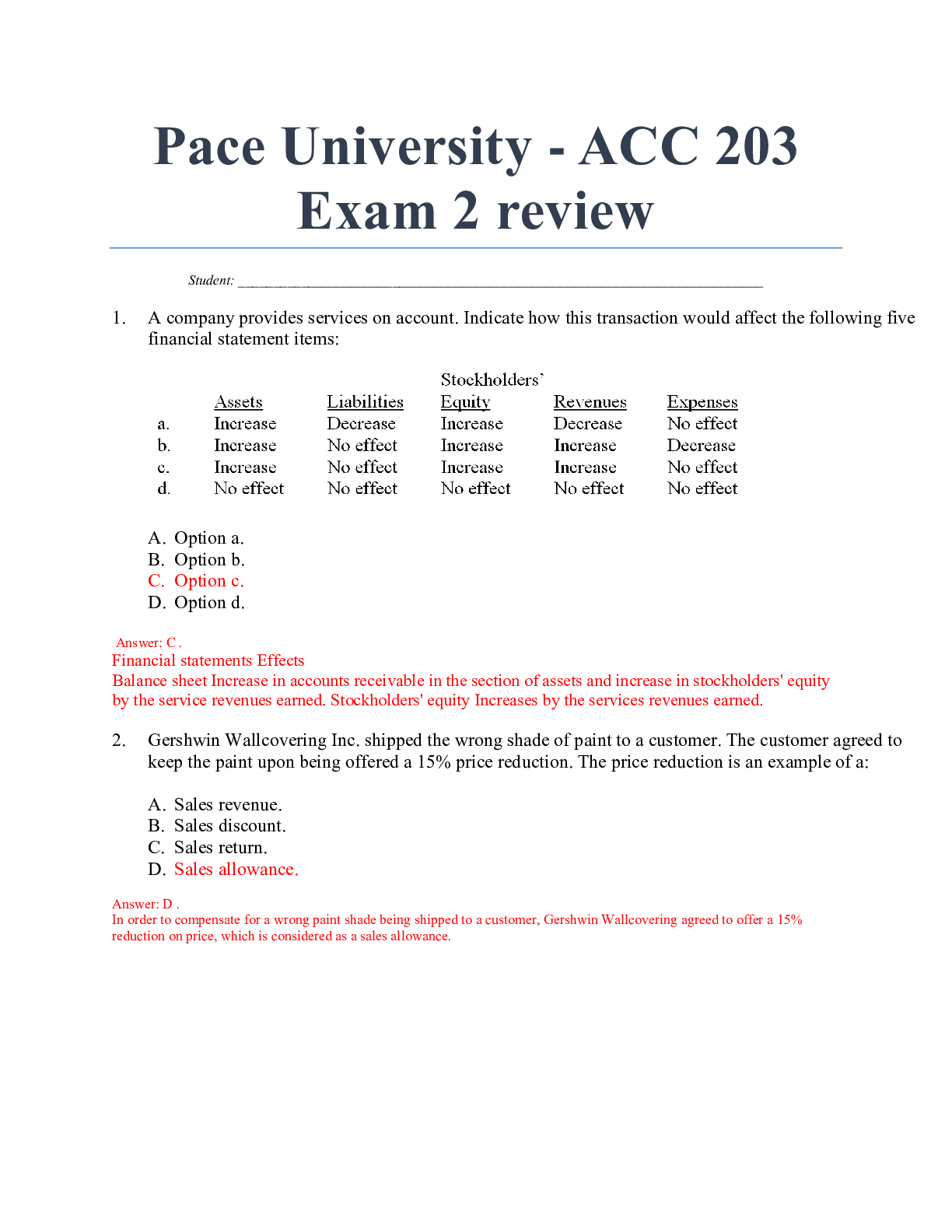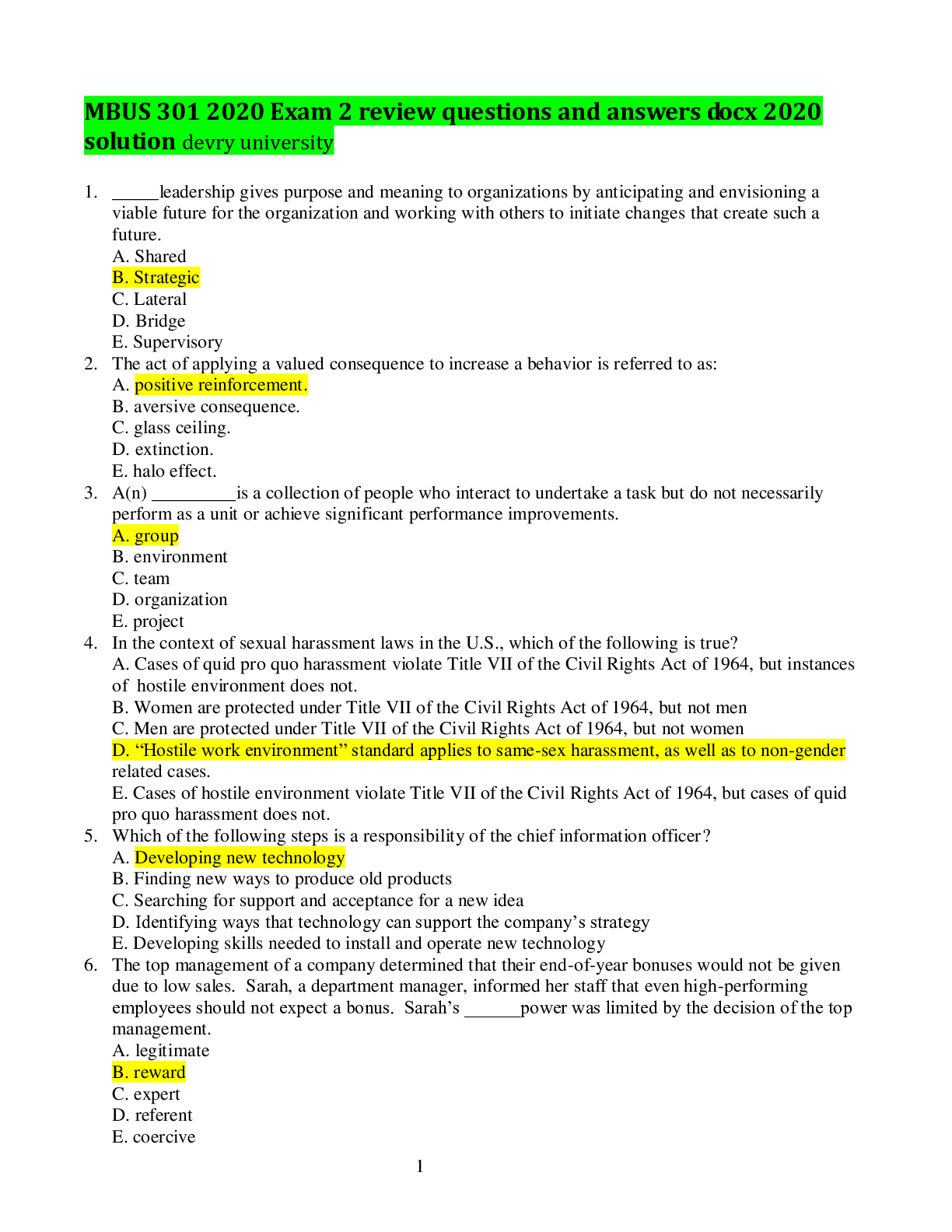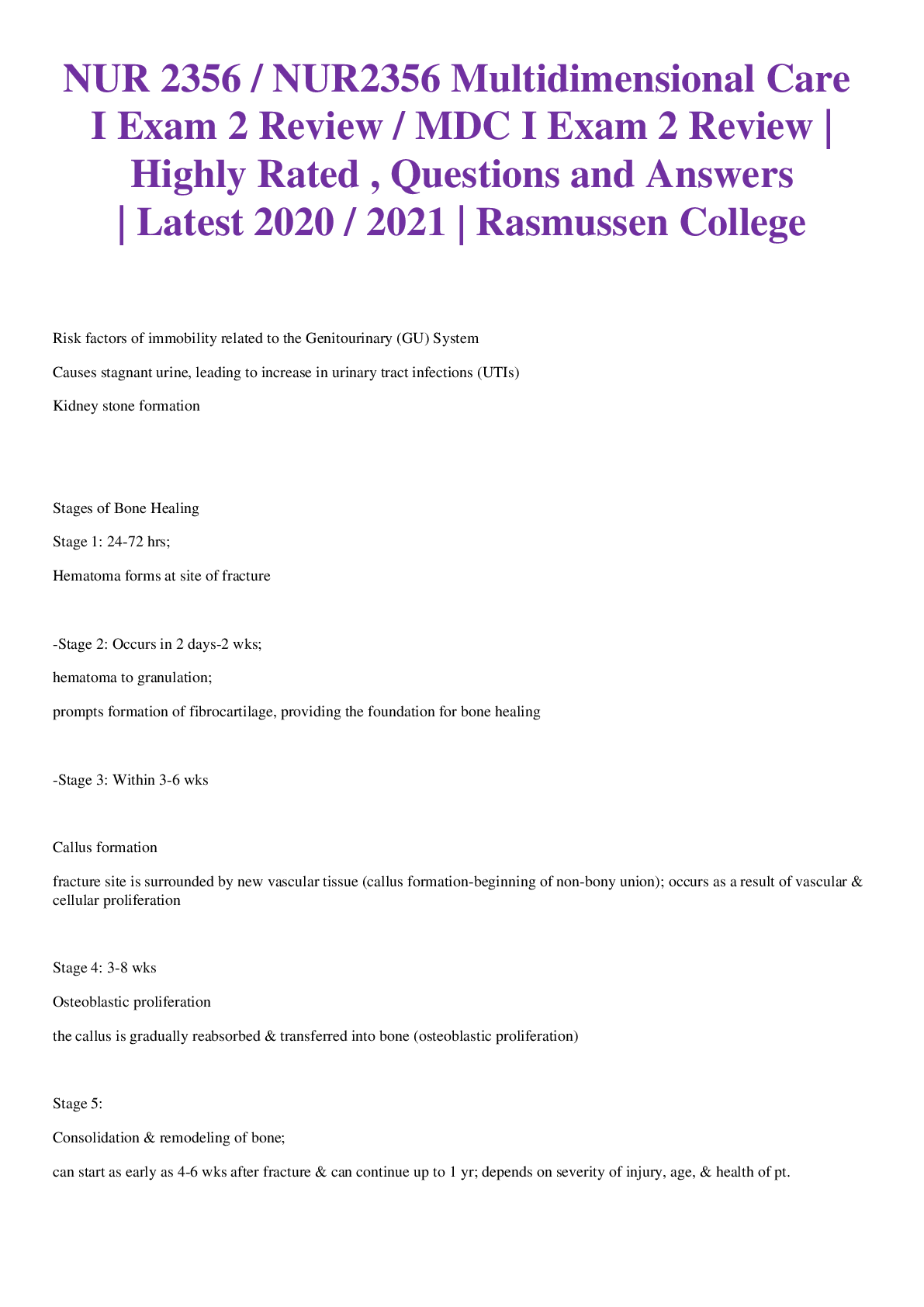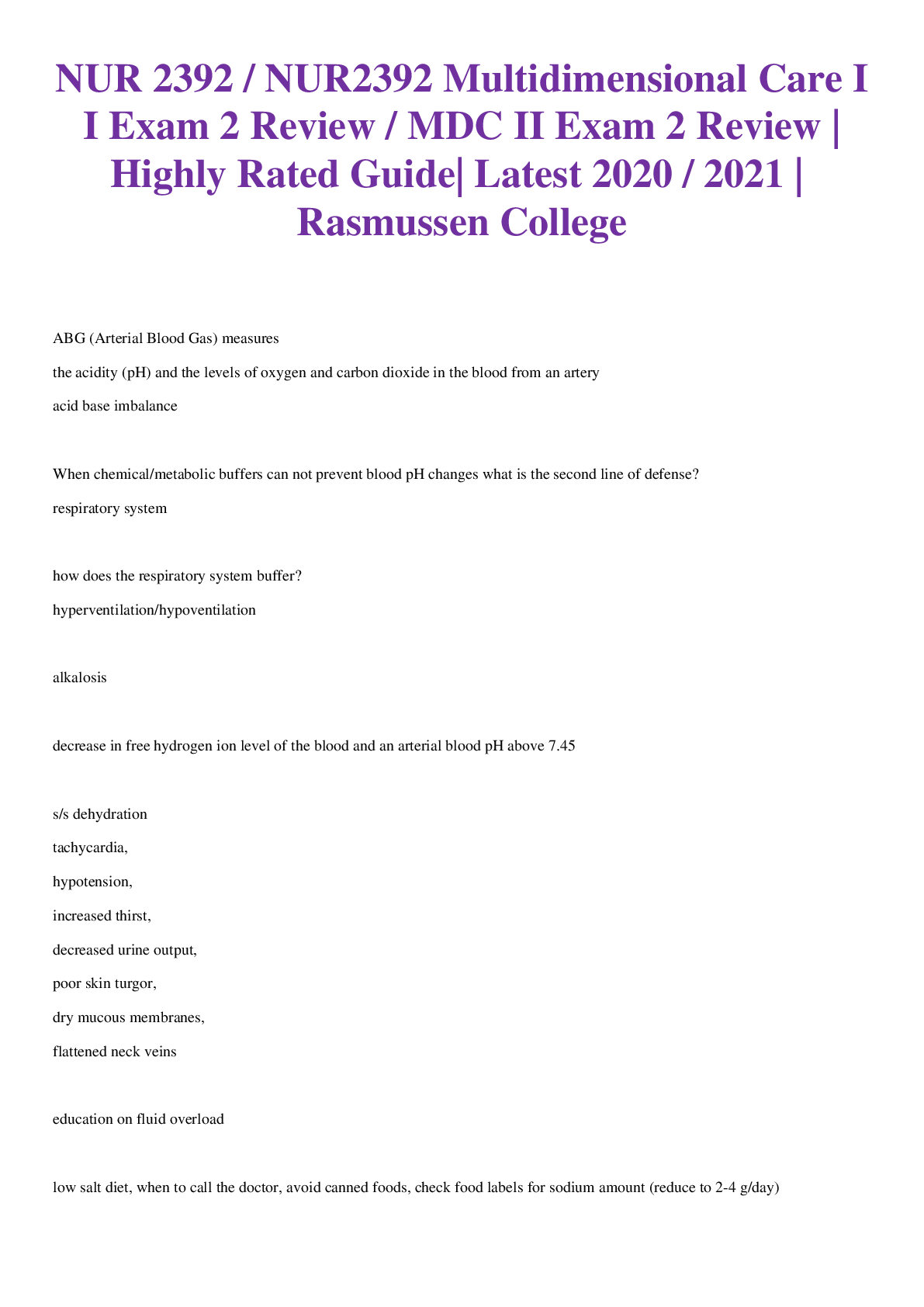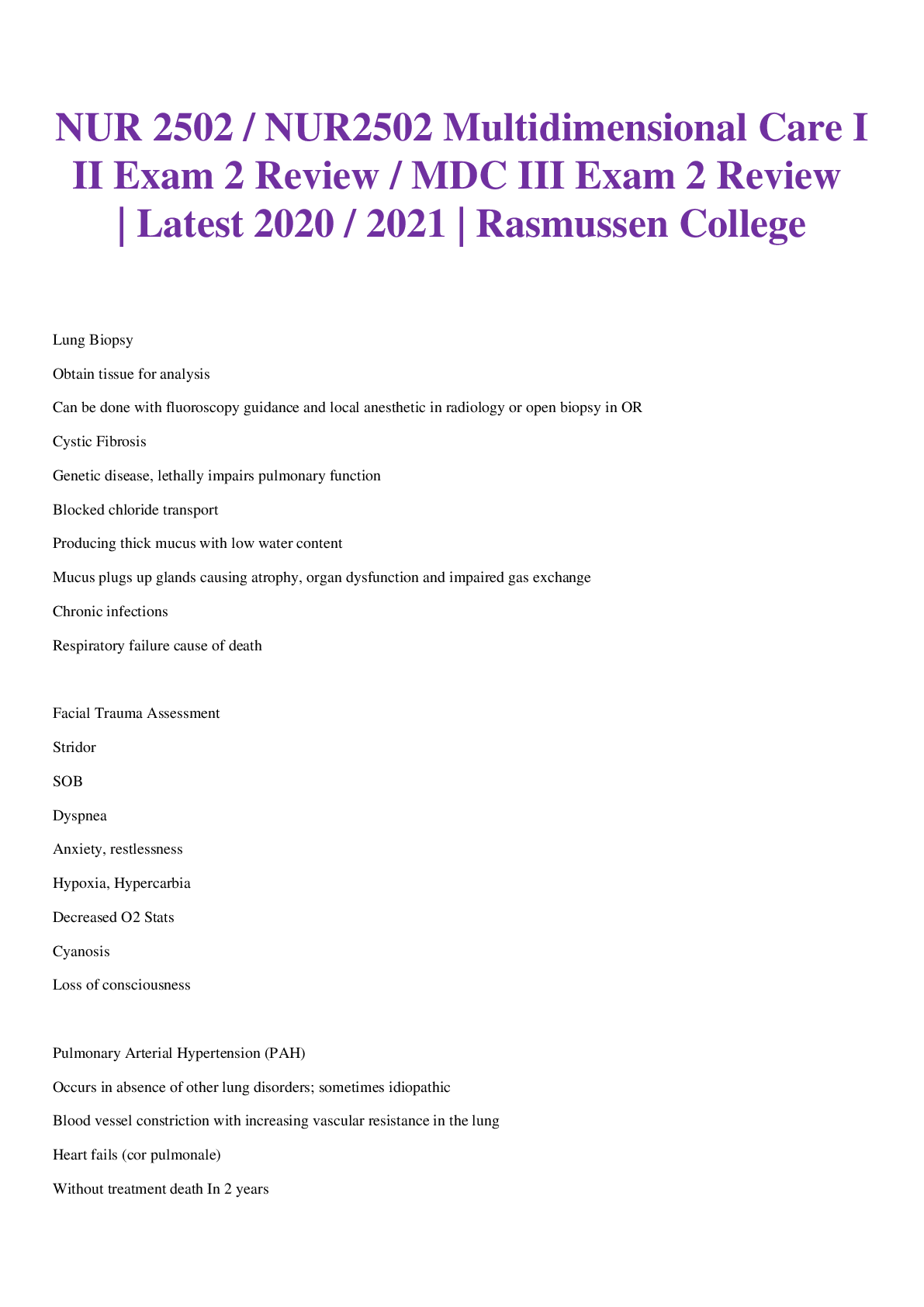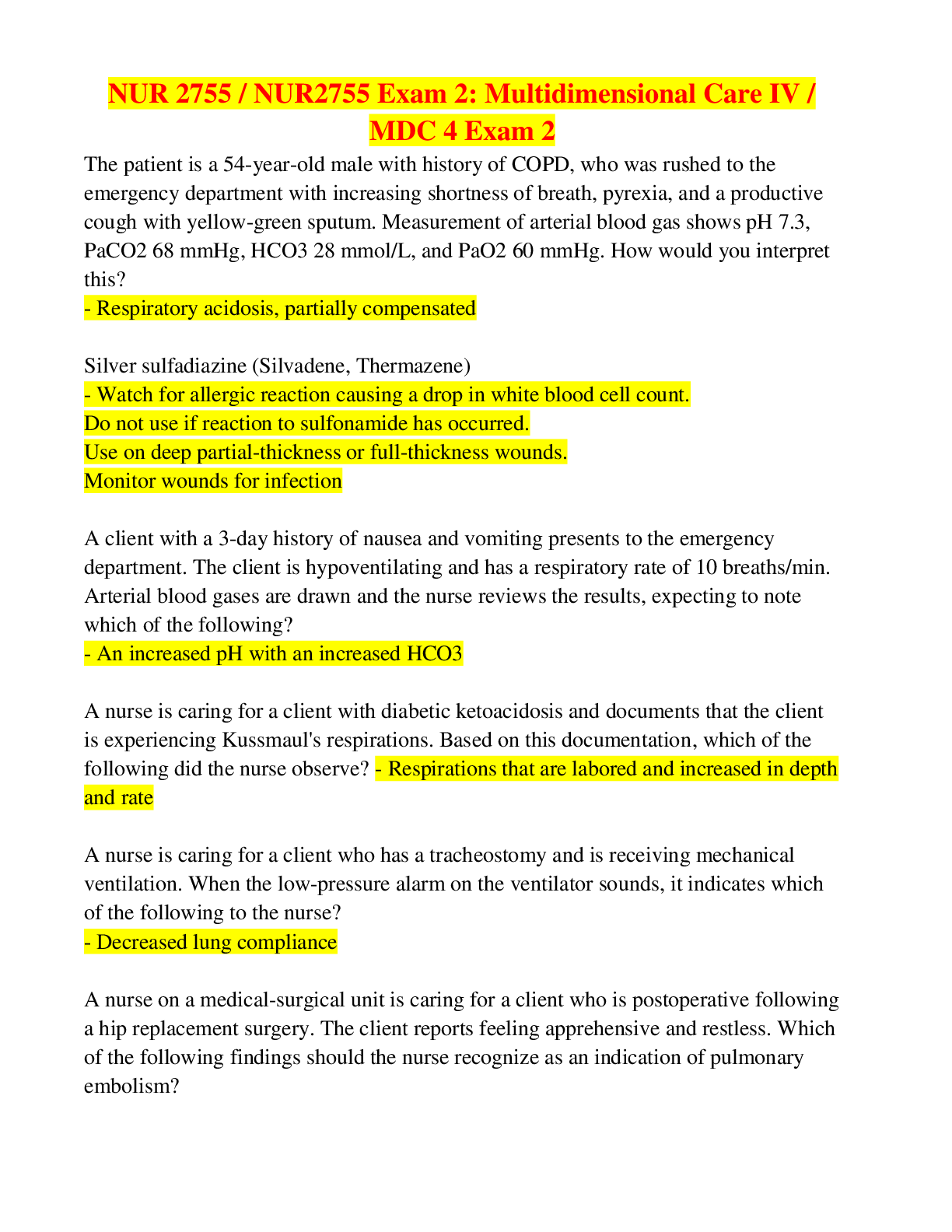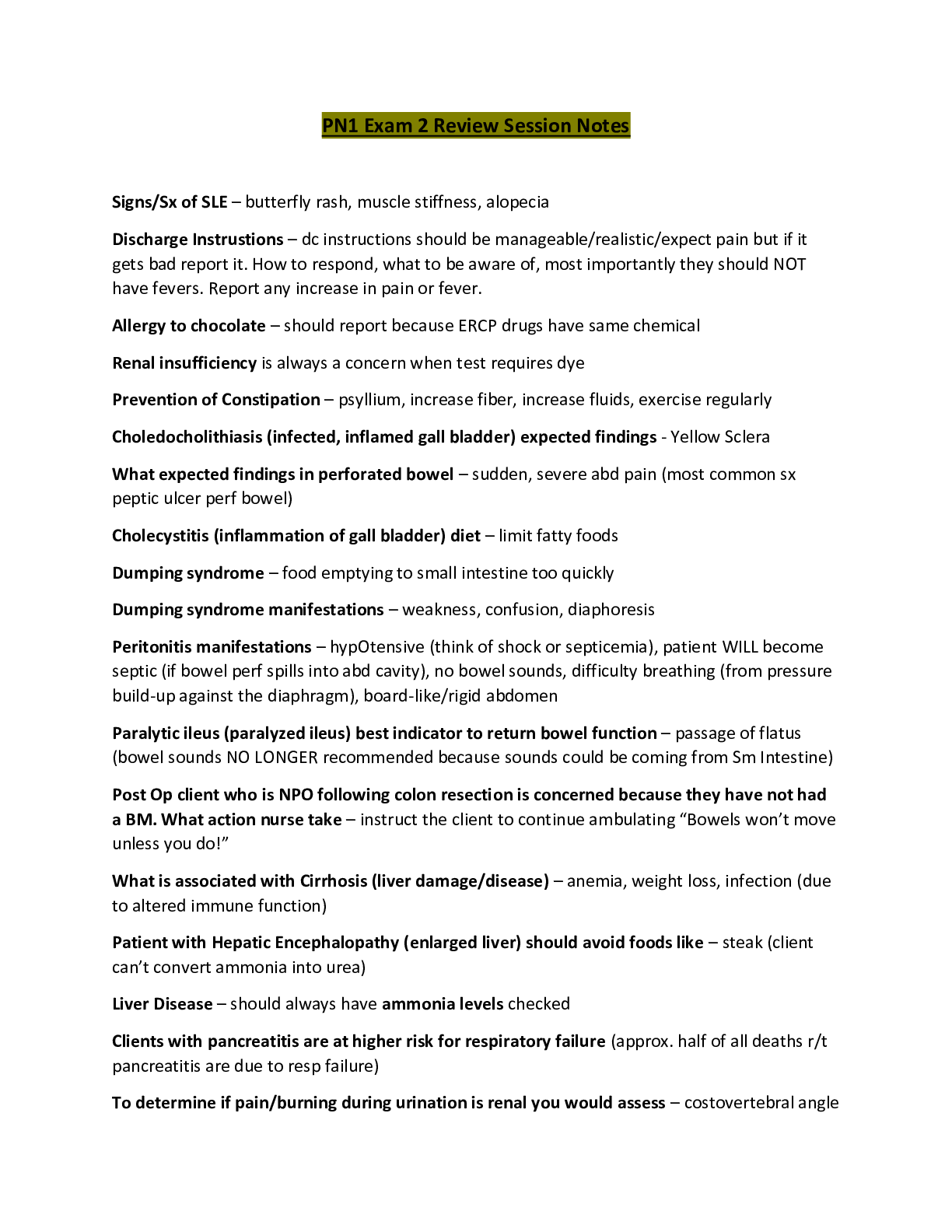NUR 1172 EXAM 2 REVIEW
Document Content and Description Below
1. Why are vitamins called micronutrients? ▪ They’re only needed in very small quantities [mg/day] to perform specific metabolic function & prevent an identified deficiency disease. 2. Are... vitamins energy producing? ▪ NO 3. Are vitamins organic or inorganic material? ▪ Organic [carbon-based] 4. How are vitamins obtained? ▪ Through food and digestion 5. What are the classifications of vitamins? ▪ Fat-soluble [A, D, E, & K] Closely associated with body lipids & easily stored Functions usually related to structural activities with proteins ▪ Water-soluble [ C & B-complex family] More easily absorbed & transported Contrast: cannot be stored except in general sense of tissue saturation 6. What are the fat-soluble vitamins? ▪ Vitamins A, D, E, N, and K 7. What are the water-soluble vitamins? 1) Vitamin C (ascorbic acid) 2) B-Complex family (8): ▪ (Assoc. with classic deficiency diseases): 1. Thiamin [coenzyme: thiamin pyrophosphate (TPP)] 2. Riboflavin [part of flavin mononucleotide (FMN) & adenine din [Show More]
Last updated: 2 years ago
Preview 1 out of 7 pages

Buy this document to get the full access instantly
Instant Download Access after purchase
Buy NowInstant download
We Accept:

Reviews( 0 )
$10.00
Can't find what you want? Try our AI powered Search
Document information
Connected school, study & course
About the document
Uploaded On
Oct 15, 2022
Number of pages
7
Written in
Additional information
This document has been written for:
Uploaded
Oct 15, 2022
Downloads
0
Views
51

